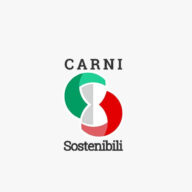
The hidden potential of women in livestock development
The exclusion of women from owning and controlling livestock is a major factor preventing households from escaping poverty. It’s a well-known adage that teaching a man to fish will feed him for a lifetime. But give a woman a cow, and she might still have to ask her husband’s permission to milk it. While women in developing countries assume much of the burden of raising household chickens, sheep and other farm animals, they receive relatively few of the benefits.
It is typically men rather than women who own the family stock as well as land, men who control the income that the animals generate, and men who have the better access to financial credit and new technologies.
The frequent exclusion of women from livestock ownership, resources and decision-making – an inequality that remains all-too-common in low- and middle-income countries – is a major factor in hindering households from escaping poverty. But given the same resources and opportunities, women would be in position to equal men in transforming their family farms into profitable and environmentally sustainable enterprises.
Contributing 40 percent or more of agricultural GDP in poor countries, the livestock sector offers huge opportunities to improve lives and livelihoods. To capitalize on this will require greater participation by women.
At the International Livestock Research Institute (ILRI), we call this a “WILD” (“Women In Livestock Development”) opportunity. A mass of evidence shows that we are unlikely to meet the UN Sustainable Development Goals, such as ending poverty and hunger, unless we empower women and men alike.
While women are much less likely than men to own a cow or a piece of land, they do commonly have control over the milk or cash generated by the “evening milking” and often manage small livestock such as chickens, goats or guinea pigs. This role, though seemingly modest, is crucial in nourishing and feeding poor households.
And as women are typically closely involved in all aspects of animal husbandry – from feeding, milking and mating animals to caring for the young, sick or injured – technologies and resources that make livestock farming more efficient and productive should be made readily available to women. This might include market information, animal disease diagnostic kits and vaccines, land for planting fodder crops, and labour-saving chaff cutters for cutting up straw for feed.
To equip themselves with these improved technologies to grow their small farm into profitable businesses, women must also have access to formal financing and credit. In three Kenyan cities, our researchers found that three quarters of women dairy entrepreneurs were forced to access finance through informal rather than formal channels. Opening up credit lines for “WILD” women through cooperatives or commercial banks will enable them to make strategic investments that significantly improve their food production, processing and selling.
What we have then seen is that oftentimes, when women gain greater control over their livestock-derived incomes, the whole family benefits. This is because women in the developing world traditionally prioritise their spending on food for the household and education for their children. We have seen evidence, for example, that intensification of family dairy farm production leads to greater consumption of milk by young children in the household, which improves their nutrition.
There are, of course, trade-offs and risks in any development that have to be considered. Intensification of livestock production, for example, requires more labour, and this may mean that women have less time to spend on cooking and caring for their children.
And there is the real risk that when women become more successful and begin to make a profit, their enterprises will be taken over by men. But this risk can be lowered by, for example, fostering collective action by women and balancing the focus of livestock development projects to serve the interests of both men and women.
Tackling culturally embedded gender inequality is, of course, no simple task anywhere, and some would argue is a particularly complex issue among traditional livestock-keeping communities. But we know that livestock are among the most important assets of poor households, and among the most potent instruments of development. And we know that, given adequate resources, women can be formidable engineers of – as well as entrepreneurs in – livestock-based development.
If teaching a man to fish will feed him for a lifetime, imagine what enabling a woman to profit fully from her livestock enterprises would do: it could feed whole families, communities and nations – for a lifetime. Together, men and women could then end absolute poverty and chronic hunger once and for all.
Isabelle Baltenweck is agricultural economist and deputy leader of the policies, institutions and livelihoods programme at the International Livestock Research Institute.
Source: Mercury.postlight.com





